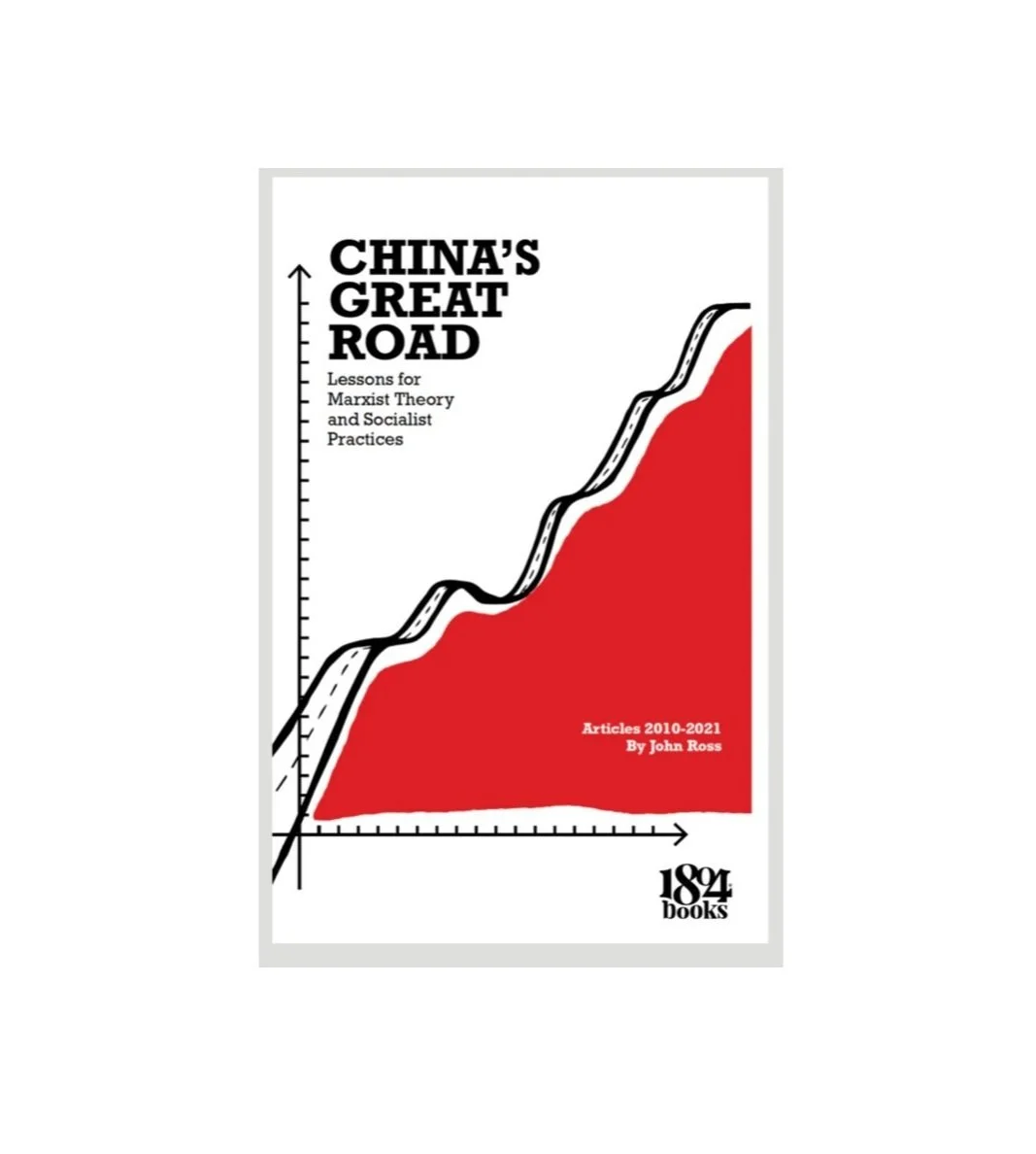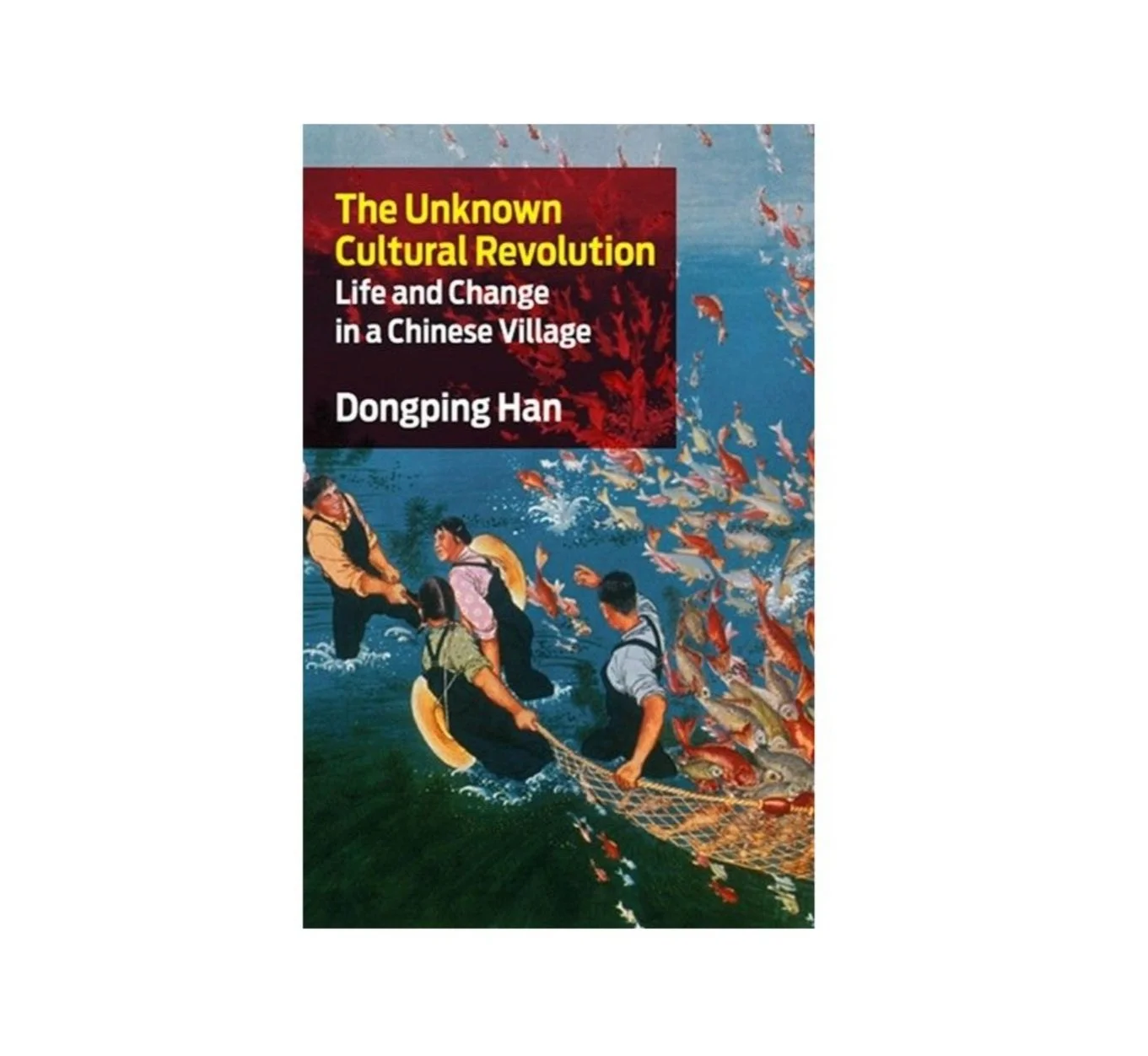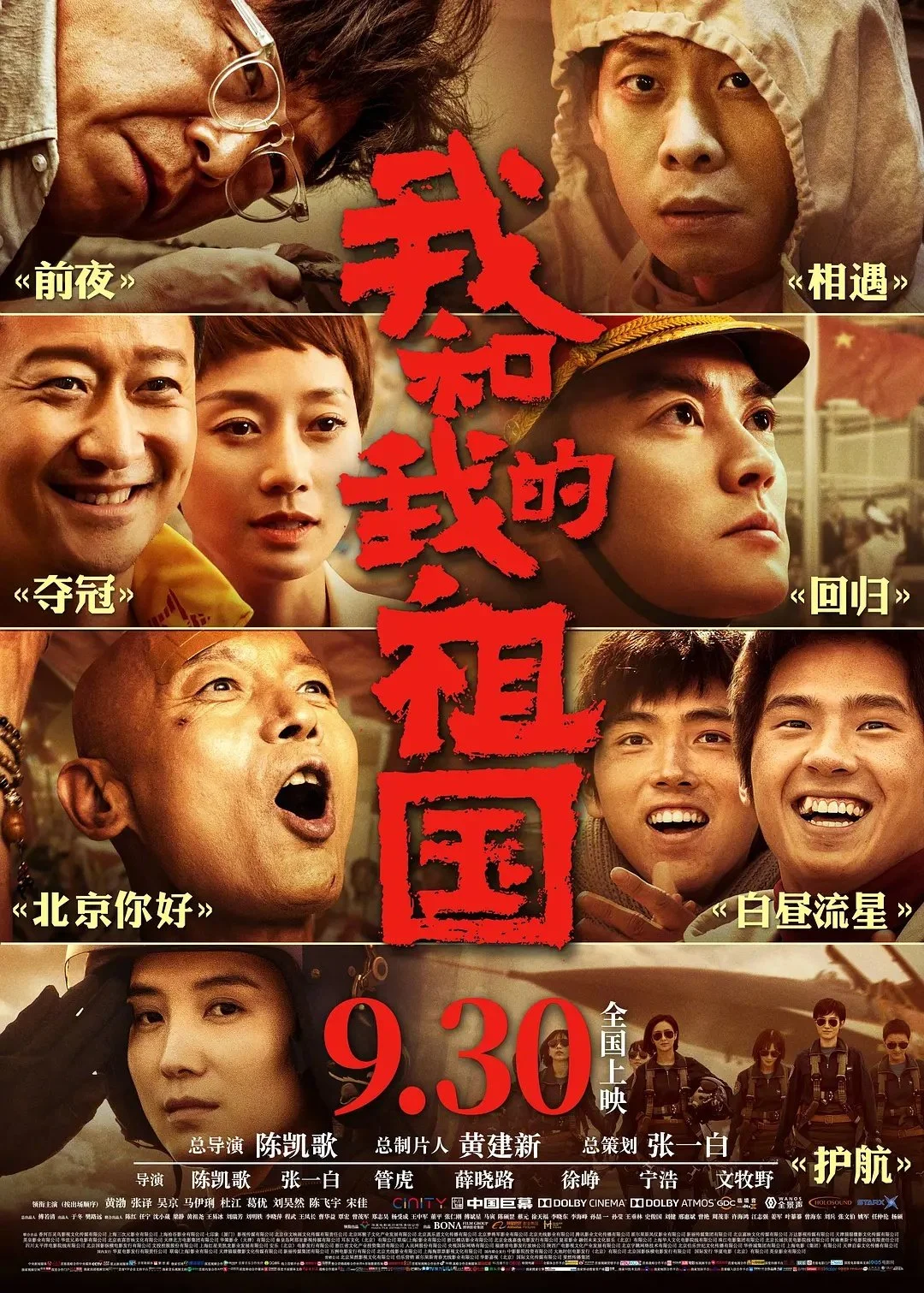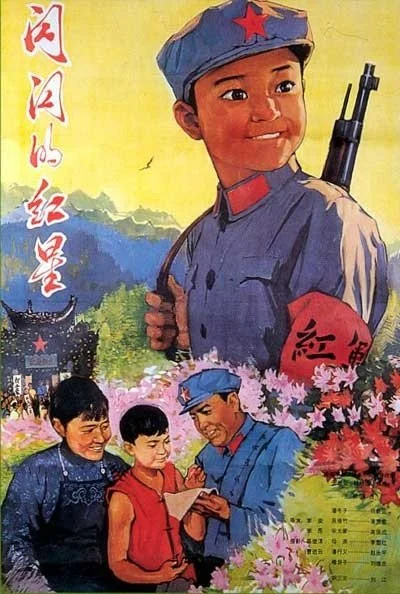
CLASS 1The Making of The Revolution
In 1920, China was grappling with the effects of a century of Western imperialism, enduring significant economic hardship under a decaying feudal system. The betrayal of Chinese sovereignty by Western powers at the end of World War I exposed the true nature of imperialist exploitation and sparked outrage among students, workers and peasants across the country. Meanwhile, the success of the nearby Bolsheviks in establishing an alternative system in Russia offered new hope for oppressed peoples. This growing unrest set the stage for the rise of anti-imperialist and socialist revolutionary forces, who emerged victorious on October 1, 1949. The formation of the People’s Republic of China marked the end of the century of humiliation, and ushered in a new era in China’s history.
CLASS 2China’s Path of Development – A Unique Model of Socialist Construction
Since the victory of the Chinese Revolution in 1949 all the leaders of the ruling communist party focused on China’s economic and social development as the number one priority. But there emerged differences over how this could be best achieved. Confronted with the immense task of alleviating poverty, addressing land inequality, and rebuilding from nearly a century of colonial and imperial exploitation, the People’s Republic of China embarked in the late 1970’s on a new path to reclaim and economically develop their country through ‘opening up’ the economy to foreign investment and capital, a path marked by contention and deep division. They branded this new path Socialism with Chinese Characteristics. China adopted a mixed economic model that allowed for the re-emergence of a capitalist market and a capitalist class while the communist party-led state retained control over the commanding heights and strategic sectors of the economy. The United States, in the early phase of this reform process, expected that China would abandon socialism but eventually came to the conclusion that the Chinese Communist Party leadership would retain political power and its commitment to socialism. This inaugurated the new anti-China crusade that is shaping US foreign policy and its global military strategy. In this class we will examine the unique path to economic development and a socialist future that China has embraced during the past four decades. We will discuss the achievements, contradictions and challenges facing China in the new era
CLASS 3U.S. Hybrid War, China, and the Struggle for the Future
In 2011, U.S. President Barack Obama announced the “Pivot to Asia” strategy, the newest attempt to contain China’s rapidly growing development under socialism and the model it offers to the Global South. This coincided with a pivotal moment in China’s process, one characterized by the total elimination of absolute poverty in the country, less dependence on foreign capital and markets, and the inauguration of mutually beneficial initiatives with countries across the world aimed at developing infrastructure and capacity for all involved. As China attempts to usher in a new era of global relations, the United States has responded by initiating a new Cold War, moving against the threat it finds in China’s successes.
As the United States continues to escalate its efforts, roping the world into its campaign, it only becomes more urgent for us to deepen our understanding of China’s impact on the world, and of the purposes and future of U.S. hostility to China. How do we understand China’s development in the 21st century? What are the intricacies and purposes of the U.S. hostility to China, and what does it mean for China and the countries it is building relationships with? What should we anticipate, and how can we prepare for what may come next?
Course Discussion Questions
Additional Resources
TERMS
-
The ACFTU, established in 1925, is China’s official labor organization, representing all workers in the PRC. It became the national organization in 1949 after the revolution but was suspended during the Cultural Revolution and reinstated in 1987. Wth over 1.7 million trade unions and more than 300 million members, the ACFTU works for worker’s interests, liaising with both government and private enterprises. It publishes various media, including Workers Daily, and operates in line with the PRC’s vision.
-
Founded in 1949, the ACWF is a mass organization that unites Chinese women across ethnic and social backgrounds. It fights for women's rights, equality, and development, promoting active roles for women in the workplace, education, and politics. The ACWF publishes extensively in multiple languages and champions the slogan "women hold up half the sky," reflecting the revolution’s commitment to equality.
-
The Boxers, or the Society of Righteousness and Harmony (Yihetuan), were an anti-imperialist group in China (1898-1900) that opposed foreign influence, especially German missionaries, and called for an end of the system of treaty ports and Western imperialist domination. Their movement culminated in the siege of foreign diplomats in Beijing, but it was crushed by a coalition of imperialist powers. The rebellion's defeat led to harsh penalties for China and a continuation of foreign domination.
-
The CCRG, formed in 1966, was instrumental in the early years of China’s Cultural Revolution. It criticized bureaucratism and fought against capitalist tendencies within the Communist Party, focusing on figures like Mao Zedong. Key moments of the revolution, such as the Shanghai Commune, saw the CCRG’s influence, though its power waned after 1969. Some members became part of the infamous "Gang of Four."
-
Chiang Kai-shek, leader of the Guomindang (GMD) after Sun Yat-sen, was a central figure in China's early 20th-century politics. He led the GMD in unifying parts of China but turned against the communists in 1927, resulting in a civil war. After Japan's defeat in 1945, Chiang lost to the Communist Party in the civil war and retreated to Taiwan, where he ruled under martial law until his death in 1976.
-
The CPPCC developed as part of the struggle for New Democracy during the Chinese revolutionary civil war from 1945-49, and became a key forum for deliberating China's political system. In 1949, it helped guide the early years of the People's Republic, drafting the Common Program. Though the National People’s Congress took over its legislative role in 1955, the CPPCC continues to function as an advisory body, contributing to policy recommendations.
-
Deng Xiaoping was a key figure in China's Communist Party and a major architect of the country’s reform and opening policies after 1978. Known for pragmatic approaches, Deng focused on modernizing China's economy by incorporating market mechanisms while maintaining the Communist Party's control. He led China through economic liberalization but remained committed to a long-term vision of socialism.
-
Refers to the economic reforms initiated by Deng Xiaoping in the late 1970s, which introduced market-oriented policies while maintaining socialist governance, in order to reach a state of material abundance which would enable the implementation of socialist distribution, while recognizing that this involved serious risks and contra- dictions and could only succeed with the guidance and leadership of the Communist Party. These reforms transformed China into one of the world’s fastest-growing economies, encouraging foreign trade and investment.
-
The GMD was the nationalist party founded by Sun Yat-sen that aimed to overthrow the Qing dynasty. Under Chiang Kai-shek, the GMD became increasingly hostile to communism and waged a decades-long civil war against the Communist Party. After losing the war in 1949, the GMD fled to Taiwan, where it held power until the late 20th century.
-
The Comintern, founded in 1919, aimed to support revolutionary movements globally following the Russian Revolution. It played a key role in organizing communist movements in China but struggled to develop an effective strategy there maintaining an orientation based on the weakness of the industrial proletariat and the need to collaborate with the patriotic national bourgeoisie, even after Chiang Kai-shek’s anti-communist coup in April 1927. The Comintern was dissolved during WWII as the Soviet Union formed alliances with capitalist countries to fight fascism.
-
Mao Zedong was the founding leader of the People’s Republic of China, known for developing revolutionary theory adapted to Chinese conditions. His leadership during the Long March and the civil war cemented his authority. Mao launched transformative campaigns, including the Great Leap Forward and the Cultural Revolution, which sought to radicalize China’s socialist development. He remained an iconic figure even after his death in 1976.
-
The May Fourth Movement began on May 4, 1919, as a response to the Treaty of Versailles, which allowed Japan to retain control of Chinese territory despite it. This student-led protest against imperialism spread nationwide, sparking strikes and boycotts. It discredited Western liberalism exposing its hypocrisy and bankruptcy and pushed many Chinese revolutionaries toward Marxism, playing a pivotal role in the rise of socialist and communist ideas in China and became a major contributing factor in the quest for a new path to national salvation.
-
Xi Jinping is the first top leader of China born after liberation. Xi Jinping was elected to succeed Hu as general secretary of the CPC and as PRC president in 2012, and assumed those offices in 2013. He was reelected in 2018. Under his leadership China moved away from the low-profile posture of the previous twenty years, and has become more self-confident and assertive in international affairs, even as the United States has become more hostile and aggressive toward China. Xi has reemphasized the party’s place in guiding economic development and the pursuit of a socialist future for China. He has promoted the study of Marxism, and has called for “completing the original mission” of the revolution. He launched the Belt and Road Initiative, a program of aid and investment in the development of global trade infrastructure bringing countries in Asia, Africa, Latin America, and even Europe into a new era of relations with China and one another.
-
In 1842 the Qing government was forced to sign the Treaty of Nanjing, the first of the unequal treaties which would build the system of imperialist domination over China. The treaty made China open five ports on the southeast coast to British traders and missionaries. Over the following decades many more “treaty ports” would be opened across the country. Britain set the terms of tariffs and duties. The treaty also established the principle of extraterritoriality, meaning that British citizens who committed crimes in China could not be prosecuted under Chinese law, but must be returned to British control for any legal procedures. In effect, British citizens were immune to local jurisdiction. A final clause of the treaty provided there would be no “most favored nation,” meaning that if any other country signed a treaty with China in the future in which China granted them a concession or privilege not included in the Treaty of Nanjing, those provisions would automatically apply to Britain as well. The Treaty of Nanjing, supposedly an agreement between equal diplomatic partners, was instead a document of domination and subordination, legally enshrining China’s military and political humiliation.
-
The PLA is the military arm of the Communist Party of China (CPC), established during the civil war. It played a central role in securing the Communist victory in 1949. Today, it serves as the defense force for the People’s Republic of China, upholding the country’s sovereignty and contributing to global peacekeeping operations.
-
The Great Leap Forward was a radical initiative to accelerate economic development. It mobilized the enthusiasm of the masses in the countryside to achieve higher levels of production, and develop new forms of social life in the communes. Experiments in collective food preparation and dining, child care, and other kinds of social provision normally done on a household basis were undertaken, both to foster greater social solidarity and free labor for application in the fields. Efforts were made to overcome the division between urban and rural livelihoods, by developing small-scale local light industries, and even producing heavier products like iron and steel based on decentralized local initiatives. The Great Leap Forward also saw the mobilization of large-scale construction projects for infrastructure, especially for water management, creating reservoirs, canals, irrigation systems, and flood control works. Many aspects of the Great Leap Forward were successful, especially infrastructure development. But it was plagued by serious problems resulting in a food supply crisis in rural areas by the spring of 1959 – namely misallocations of food, especially grain, led to drastic supply shortfalls in the villages. By the summer of 1959, the party began to address the problems and sought solutions. This was a major crisis for the CPC and led to serious adjustments in policy and leadership.
-
The Belt and Road Initiative (BRI) is a global development strategy launched by China in 2013 aimed at enhancing international trade and investment through large-scale infrastructure projects. It focuses on building connectivity and cooperation across various regions, including Asia, Africa, and Europe, by constructing roads, railways, ports, and energy networks. A key goal of the BRI is to facilitate industrialization in partner countries by improving the physical infrastructure needed to support production and trade. In Africa, the BRI is contributing to industrialization efforts by constructing industrial parks, fostering local production, and addressing logistical and infrastructural challenges that hinder economic development. Through these investments, China aims to create a mutually beneficial framework that promotes sustainable economic growth and development across participating countries.
-
The Opium Wars were a series of conflicts between China and Western powers, primarily Britain, during the mid-19th century. These wars, beginning in 1839 and lasting through 1860, were rooted in the British imperialist desire to expand their trade influence in China, particularly by exporting opium to Chinese markets in exchange for valuable goods like tea and silk. When the Chinese government, under the Qing Dynasty, attempted to curtail the opium trade due to its devastating social and economic effects, Britain retaliated with military force. The First Opium War (1839-1842) ended with the Treaty of Nanking, which forcibly ceded Hong Kong to Britain, opened five Chinese ports to British trade, and imposed heavy reparations on China. The Second Opium War (1856-1860), fought by both Britain and France, further weakened Chinese sovereignty, resulting in additional territorial concessions, increased foreign control of trade, and the legalization of the opium trade. The Opium Wars marked a significant turning point in Chinese history, as they initiated a period of humiliation and subjugation under Western imperialism, known as the "Century of Humiliation." These conflicts not only shattered China's economic autonomy but also deeply eroded its political power and social fabric, setting the stage for internal rebellions and foreign domination in the decades that followed.

















